What to see and do in LaosPrepared by Harold Stephens
Travel Correspondent for Thai Airways International
LAOS first opened its doors to tourism in February 1989, but visitors were prohibited to venture outside Vientiane without a travel pass which wasn't always easy to obtain. Conditions since then have improved.
Six destinations are open to travellers. The most popular after Vientiane is Luang Prabang to the north, where three major tributaries flow into the Mekong River—the Nam Khan, the Nam Ou and the Nam Seuang. The first Lao kingdom was consolidated in Luang Prabang in 1353, and it wasn't until 1545 that the seat of government was moved to Vientiane.
When Laos became a French protectorate in the early 20th century, they allowed the Luang Prabang monarchy to remain. It wasn't until the Pathet Lao took over in 1975 that the monarchy was finally dissolved.
The last vestiges of the Lao monarchy are seen in the building that now houses the National Museum. The palace was originally constructed by the side of the Mekong in 1904 as a residence for King Sisavang Vong and his family.
Today, Luang Prabang is a sleepy town of 20,000 inhabitants where not much goes on. The mornings are cool and refreshing (the nights can be downright cold), making this the best time to stroll through the streets. The whole town, in fact, can be seen on foot in a day or two.
The streets, much like those of Vientiane, are lined with old French colonial buildings that were once private residences. The town itself sits at the confluence of the Mekong and the Nam Khan rivers, with most of the historical temples located on the peninsula formed by these two rivers.
Many visitors to Luang Prabang travel there just to visit the Pak Ou Caves, about 30 km away by boat on the Mekong River, at the mouth of the Nam Ou. The attraction here is the two caves in the lower part of the limestone cliff which are jammed full with Buddha images of all styles and shapes. The lower caves, I found, were the most impressive if not a bit eerie. You will need a flashlight if you want to see them.
The second destination in the north that one shouldn't miss is Phonsawan, not for the town but what lies beyond it—the mysterious Plain of Jars.
Phonsawan is the new capital of Xieng Khwang Province. There's not much to see — an airfield, a semi-paved main street lined with tin-roofed shops, a market and a few government buildings.
But 20 km outside of Phonsawan is the Plain of Jars, one of the great mysteries of Southeast Asia. In this undeveloped area of grassy fields and open plains are huge jars of unknown origin. They are no ordinary jars of the home decoration variety; they weigh anywhere from 600 kg to a ton or more each, though the biggest of them weighs as much as six tons. They are all made of stone.
How they got there is anyone's guess. Even the experts are not certain. Some say they were used for fermenting wine, and others believe in times past they were used for storing rice.
Legend has another story to tell. To celebrate the victory of a local hero who drove out a wicked king, the people cast the jars from a type of cement that was made from buffalo skin, sand, water and sugar cane, and fired these in a nearby cave. Although an uncertain number of jars have been carried off, there are hundreds of others left to be seen.
My favourite destination in Laos is in the south. Fortunately three of these southern destinations have been opened to tourism since late 1989. These are Savannakhet, Salavan and Champasak.
Savannakhet, with its provincial capital at Muang Khanthabuli, is just across the border from Thailand but for non-Thais it is not a border crossing. The attraction here is a 16th-century stupa.
Salavan Province is interesting for two reasons. Hill tribe people live in villages on the Boloven Plain, villages that are arranged in circles. They are unlike the hill tribe people of the north.
The second attraction is the yearly festival in which water buffaloes are sacrificed in the middle of the village circles. It's a festival seen nowhere else in Southeast Asia.
Finally there's Champasak, one of Southeast Asia's most important historical sites. On my recent trip to Laos time prevented me from travelling in the south, but I remember Champasak and its capital Pak Se very well. Once one sees Champasak he or she can hardly forget the place. The attractions here are the ruins, miles of ruins, and again some very mysterious stones.
Between the 10th and 13th centuries AD, southern Laos was part of the great Cambodian Angkor Empire. Pak Se, founded by the French as an administrative outpost in 1905, is today the capital of the province. It is a relatively new town at the confluence of the Mekong and the Se Don rivers. The only thing of interest in the town is the market place. Lao Tourism accommodation is a very pleasant and comfortable restored French colonial villa with high ceilings and wide verandahs. It is located a short way out of town.
Pak Se is also the gateway to the Angkor temple ruins of Wat Phu. When I first went to Pak Se in the mid-1960s, French archaeologists were excavating parts of the ruins. According to them, Wat Phu was only one of what could be a half dozen others still lost and buried in the jungles.
After spending a lifetime of seeking out temples and lost ruins in Southeast Asia, from those in Thailand and Cambodia to Borobudur in Java, I find the most appealing ruins are those that have not been completely rebuilt. How astounding it is to be walking through the ruins at Angkor Wat, and to look up and see in a death-like grip of a Banyan tree the stone head of a long forgotten Khmer king smiling down at you. The jungle in the slow process of reclaiming its right adds to the attraction of such ruins rather than takes away from it.
Wat Phu is on the lower slopes of Phu Pasak, which historians believe was sacred to the pre-Angkor kingdom of Chen La in the 6th century. The site is divided into lower and upper parts which are joined by a stairway.
I was told in Lao Tourism in Vientiane that the temple is open, but visitors are prohibited to remain after dark.
Near Wat Phu is a rock that is as fascinating as the Plain of Jars. Carved deep into the rock is the shape of a human being with outstretched arms and legs, and superimposed over this is the form of a crocodile. It is believed to be the site of Chen La (6th century) human sacrifices. All about are stone steps covered with moss. Trailing vines hang from huge ghostly banyan trees. The whole area has an unnerving atmosphere.
When I arrived in Vientiane I was informed the only authorized way to travel around the country was by Lao Aviation. I inquired about river ferry passage from Vientiane down to Savannakhet that I read about in a Lonely Planet guide. I was told it was impossible, and it wasn't until I was leaving Laos that I learned "impossible" meant due to low waters, the ferry was not in operation. The bottom line is that the river ferry does run, river conditions permitting, and foreign travellers can book passage. It is certainly a splendid way to travel down the mighty Mekong.
The large river ferry leaves the south jetty every Friday morning at 6, arriving in Savannakhet Saturday evening. Coming back, boats leave Tuesday morning and arrive Thursday. The fare is less than US$5 per person.
Lao Tourism in Vientiane will help you plan your travel once you are in the country. It's a good idea to take your own map, as there are few handouts and information pamphlets in the tourist offices. But the Laotians are helpful, and that's all that counts. And they do have a beautiful country. QUESTIONS AND ANSWERSQ. Dear Mr. Stephens. I just returned from a great 12-day trip to Thailand. We stayed at Phuket, Chiang Mai, and Bangkok and on a Live-aboard boat (SCUBA Diving) and I wasn't able to locate a nice collectable map that I can have framed for my Shop here in the USA. I was wondering if you had any suggestions or could offer me any help. Thanks, Ryan Weeks.
A. Dear Ryan, there are a few good mapmakers around. APA Press, the publisher that produced Insight Guides, has a good line of maps. Some of the most attractive maps I have seen are by B&B Maps of Thailand produced by David Unkovich, a photographer who lives in northern Thailand. These maps are really first class and worthy of hanging on any wall.
Harold Stephens
Bangkok
E-mail: ROH Weekly Travel (booking@inet.co.th)
Note: The article is the personal view of the writer and does not necessarily reflect the view of Thai Airways International Public Company Limited. | 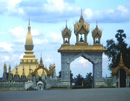
The heart of Luang Prabang | | 
The Mekong River seen from Luang Prabang | | 
Beautiful views of the river seen form up high | | 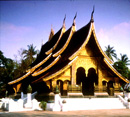
Luang Wat | | 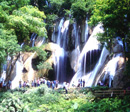
Luang Prabang Tard Kang See | | 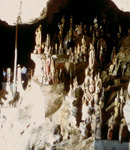
The famous Ting Caves of Luang Prabang | | 
The Plane of Jars | | 
The author explores the many Laos ruins | | 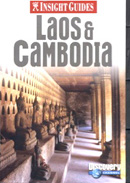
Insight Guide tells the whole story | | 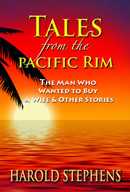
For a love story about Laos read the author’s Tales |
|





